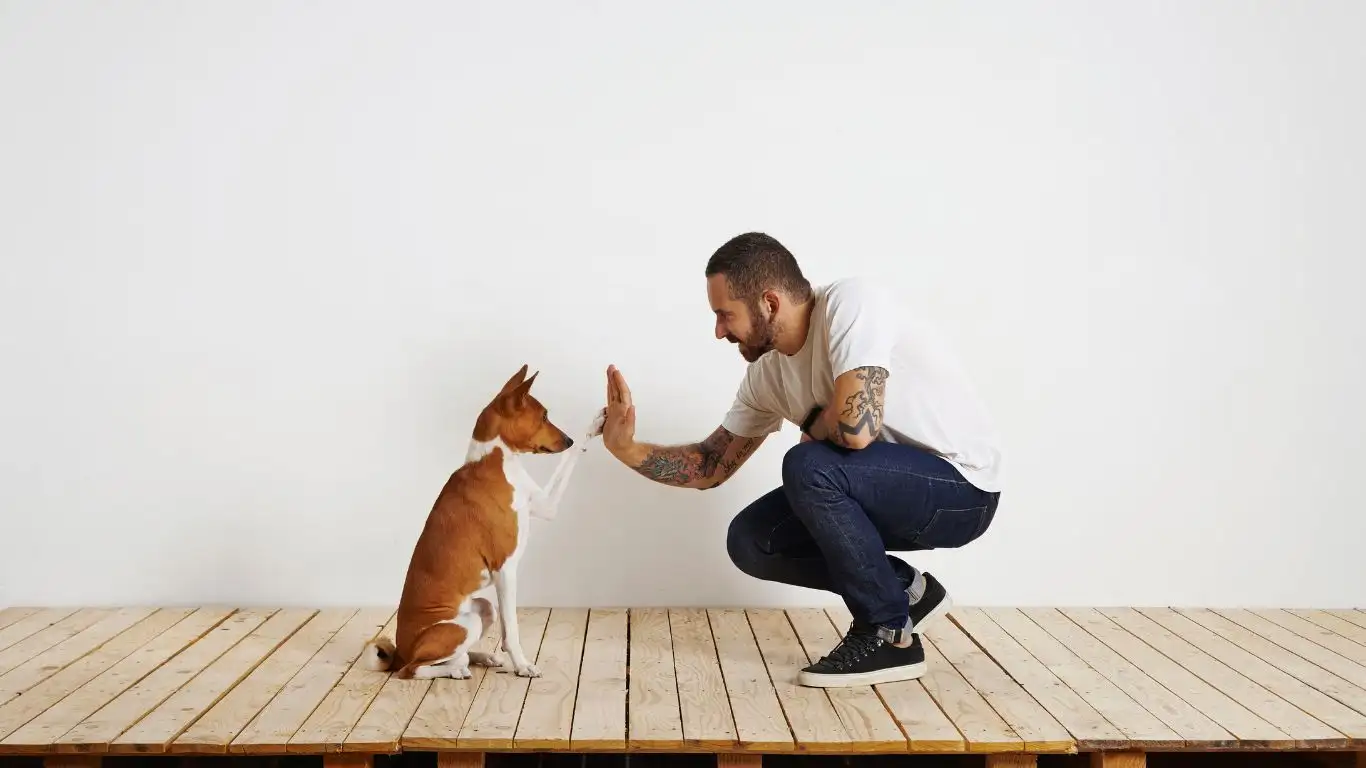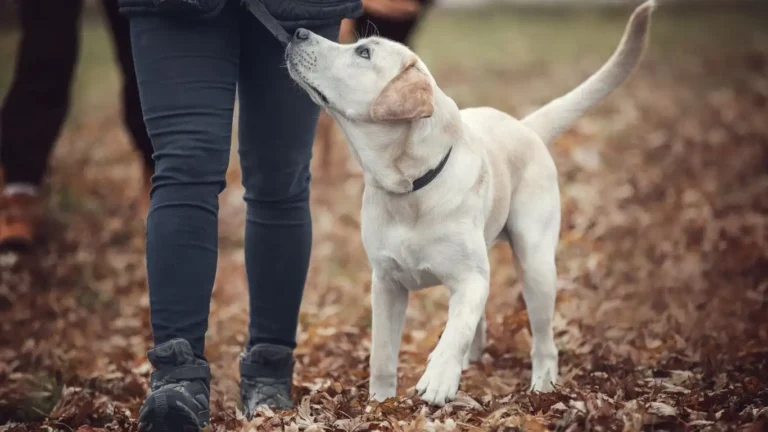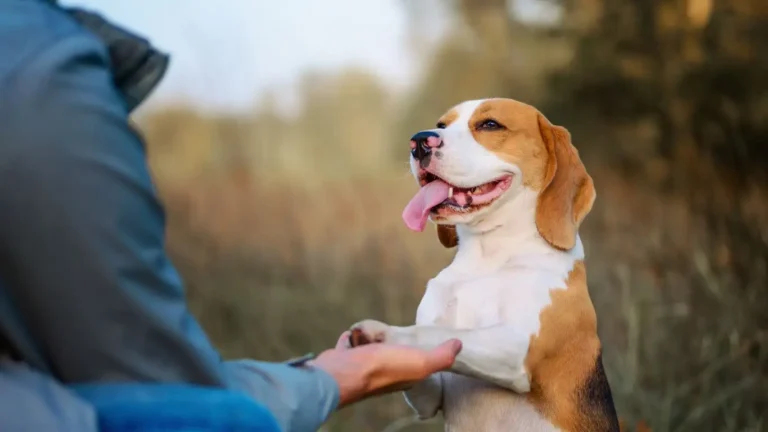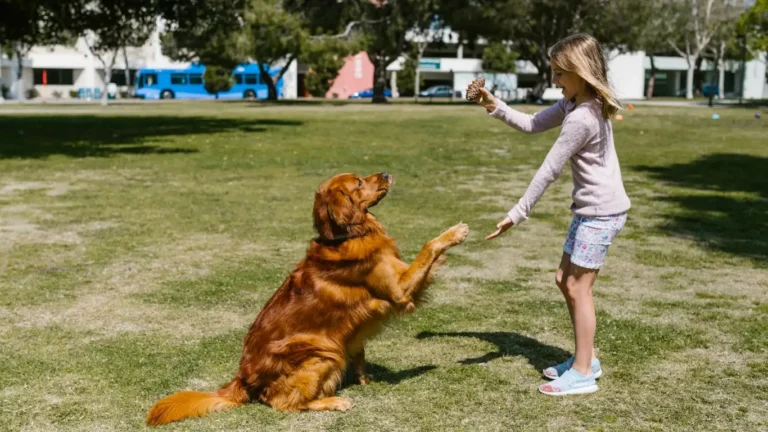How to Train Your Dog to Stop Chewing on Garden Plants: Simple, Effective Tips
If you’re a dog owner, especially one with a lush garden or a few carefully cultivated plants, you’ve probably faced the frustrating issue of your dog chewing on your garden plants. It might seem like your dog is doing it just to annoy you, but in reality, dogs chew for many different reasons: boredom, stress, hunger, or even simple curiosity. In this article, we’ll explore how to train a dog to stop chewing on garden plants, based on my experience working as a Canine-Assisted Therapy Trainer. Training your dog to avoid these behaviors not only helps protect your plants but also promotes a stronger bond between you and your furry friend.
Understanding Why Dogs Chew on Plants
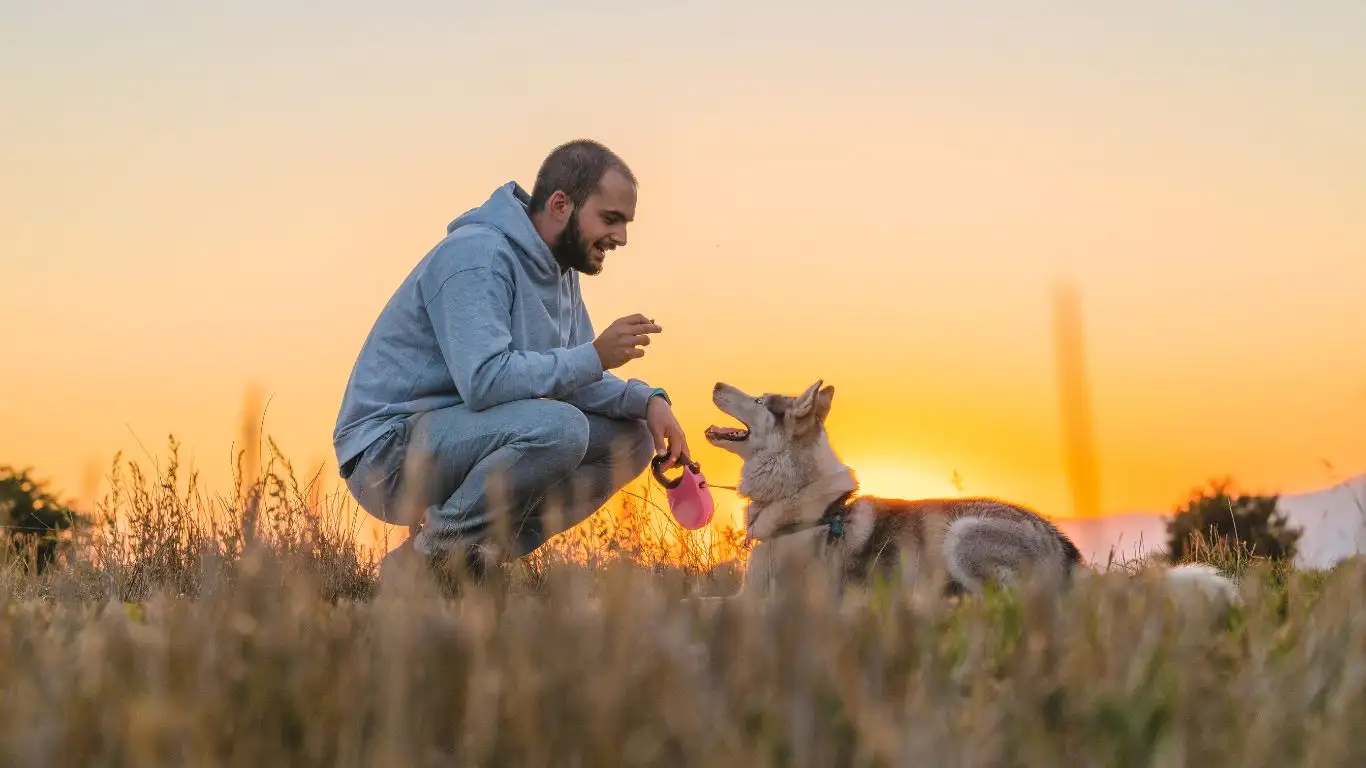
Before you dive into training, it’s essential to understand why your dog is chewing on those garden plants. Dogs aren’t chewing for the sake of being naughty—they may have a variety of reasons for doing so. By identifying the root cause, you’ll be able to address the issue more effectively and prevent the behavior from becoming a habit.
Curiosity and Exploration
One of the most common reasons dogs chew on plants is simply out of curiosity. Dogs are naturally inquisitive animals, and your plants may just seem like another interesting object to investigate. Puppies, in particular, tend to chew on anything they can get their mouths on as part of their exploration process. If this is the case with your dog, they may not even be aware that they’re doing anything wrong!
Boredom or Lack of Stimulation
Another key factor is boredom. If your dog isn’t getting enough exercise or mental stimulation, they might start chewing on whatever is available to entertain themselves—whether that’s a chew toy or a beloved plant. I’ve seen many dogs who chew on plants simply because they don’t have an outlet for their energy, and it can often be linked to a lack of structured playtime or walks. You’d be surprised how quickly a simple increase in daily activity can reduce this behavior.
Separation Anxiety
If your dog is chewing when left alone or when you’re out of sight, it could be a sign of separation anxiety. Dogs with this condition often act out in response to their stress, and chewing on plants may become one way for them to self-soothe. As a Canine-Assisted Therapy Trainer, I’ve worked with many dogs exhibiting anxiety-driven chewing, and it’s often a deeper issue that needs to be addressed with both training and emotional support.
Health Issues and Digestive Problems
Sometimes, a dog may chew on plants as a way of alleviating an underlying health problem. Certain plants, like grass, can have a laxative effect or help with an upset stomach. While this doesn’t mean your dog should be allowed to chew on your prized hydrangeas, it’s important to keep an eye on their behavior to rule out any potential health issues. If you suspect your dog is chewing due to a digestive problem, a visit to the vet is a good idea.
How to Train Your Dog to Stop Chewing on Plants
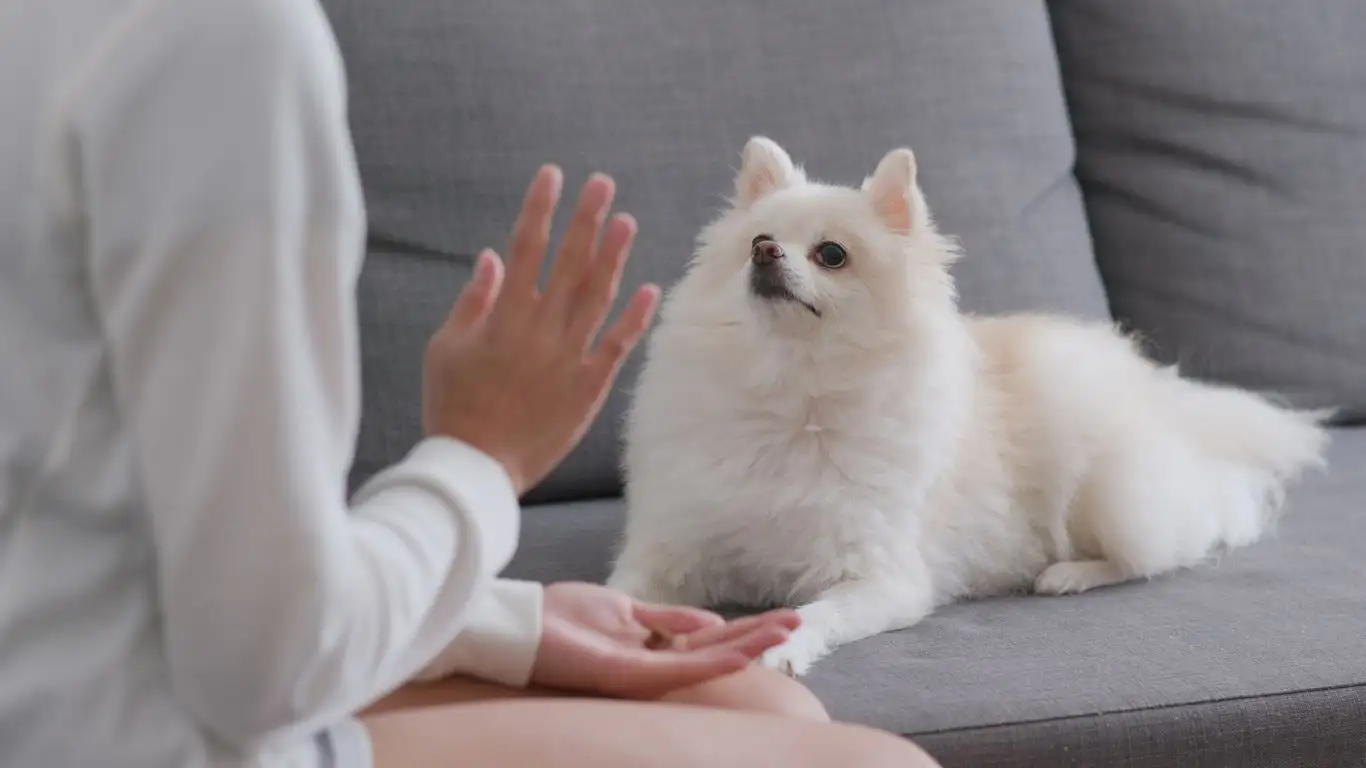
Now that we’ve covered some of the reasons why your dog may be chewing on garden plants, let’s talk about how to train them to stop. It’s important to approach the training process with patience and consistency, as breaking this habit won’t happen overnight. Here are some practical, effective steps to help you on your way:
1. Provide an Alternative
One of the easiest ways to discourage your dog from chewing on plants is to provide an alternative. Dogs love to chew, and offering them an acceptable object like a chew toy or a bone can help redirect their attention. As a Canine-Assisted Therapy Trainer, I’ve found that giving dogs a designated “chew zone” is one of the best solutions. If your dog knows they have an appropriate place to chew, they’re less likely to go for your garden plants.
2. Use Deterring Sprays
Another strategy is to use a commercial dog deterrent spray. These sprays are designed to taste unpleasant to dogs, making them less likely to chew on treated objects, including your plants. While this can be effective, it’s important to choose a spray that’s safe for both your dog and your garden. Some natural, pet-safe options include sprays made from bitter apple or citrus oils. Just make sure to test them on a small section of your plants first to ensure they won’t damage them.
3. Protect Your Garden
If your dog has a particular fondness for certain plants, consider physically protecting your garden. Fencing off the area or using plant covers can help prevent your dog from getting to the plants in the first place. Another solution I’ve found effective is using chicken wire or other barriers around delicate plants. This way, your dog can’t access the plants without you having to worry about the hassle of constant supervision.
Training Your Dog to Follow Commands

Training your dog to respond to basic commands like “leave it” can be incredibly helpful in preventing them from chewing on plants. It’s a skill that’s not only beneficial for keeping your garden intact, but it also strengthens your bond with your dog. Here’s a simple way to teach the “leave it” command:
- Start with a treat in your hand. Show your dog the treat but don’t let them have it.
- Say “leave it” while keeping the treat in your hand and wait for them to lose interest.
- Reward your dog with a different treat as soon as they stop focusing on the original treat. Repeat this until they consistently obey the “leave it” command.
Once your dog has mastered this command, you can apply it in situations where they approach your garden plants. It may take some time, but with patience and repetition, your dog will learn to associate the command with the behavior you want to see.
Positive Reinforcement and Reward-Based Training

Positive reinforcement is a core principle of dog training, and it’s one that I’ve seen work wonders when helping dogs stop chewing on garden plants. Rather than punishing your dog for chewing, focus on rewarding them when they exhibit the desired behavior—whether that’s ignoring your plants or chewing on their toys instead.
When I’m training a dog to stop chewing on plants, I use treats, praise, and affection as rewards. Dogs, just like humans, respond to positive feedback, and reinforcing the right behavior makes them more likely to repeat it. I always recommend starting with high-value treats—something your dog loves and doesn’t get often—to make the reward really enticing. Over time, you can phase out the treats and just use verbal praise or a quick belly rub as a reward.
Timing Is Everything
One of the most crucial aspects of positive reinforcement is timing. You need to reward your dog immediately after they show the desired behavior, so they make the connection between the action and the reward. For example, if your dog turns away from the plant and starts playing with their toy, that’s the perfect time to reward them. The key is to act quickly—within a few seconds of the behavior you want to reinforce.
Consistency in Training
Consistency is another important element. If you reward your dog one day but ignore the behavior the next, it can send mixed signals. Dogs thrive on routine, so it’s important to apply the same rewards and corrections every time. Training should be a daily practice, and while you don’t need to spend hours at a time, short, frequent training sessions tend to be more effective. Even a few minutes a day can make a huge difference.
Setting Up Boundaries and Limiting Access

Sometimes, training alone isn’t enough to completely stop a dog from chewing on garden plants. Setting up boundaries and limiting access to the plants can be a valuable strategy while you’re in the process of training. I’ve worked with many dog owners who found this to be an effective way to create a temporary solution while their dog was learning new behaviors.
Physical Barriers
If you’ve tried training techniques and your dog is still determined to chew on your plants, consider using physical barriers like fences, plant covers, or even garden netting. These can be particularly useful if you have specific plants that are at risk of being destroyed. I’ve personally used chicken wire around delicate flowers, and it works like a charm. It’s unobtrusive and blends well into the garden while keeping the dogs out.
Another option is to use raised garden beds or planters. If your plants are elevated, it’s harder for your dog to reach them, and it also keeps them safe from digging. Dogs who are persistent chewers often find it easier to access ground-level plants, so raising them can significantly reduce the temptation.
Training in a Controlled Environment
Sometimes, the issue is simply that your dog hasn’t learned to control their impulses yet. In those cases, I recommend practicing basic obedience in a controlled environment, such as inside the house or in a fenced-in backyard, before moving on to more challenging environments like your garden. Training your dog in a low-distraction space helps them focus better on the task at hand. Once they’ve mastered the command “leave it” or learned to stay away from specific objects, you can gradually add more distractions, like plants, to test their progress.
Redirecting Energy: The Importance of Exercise
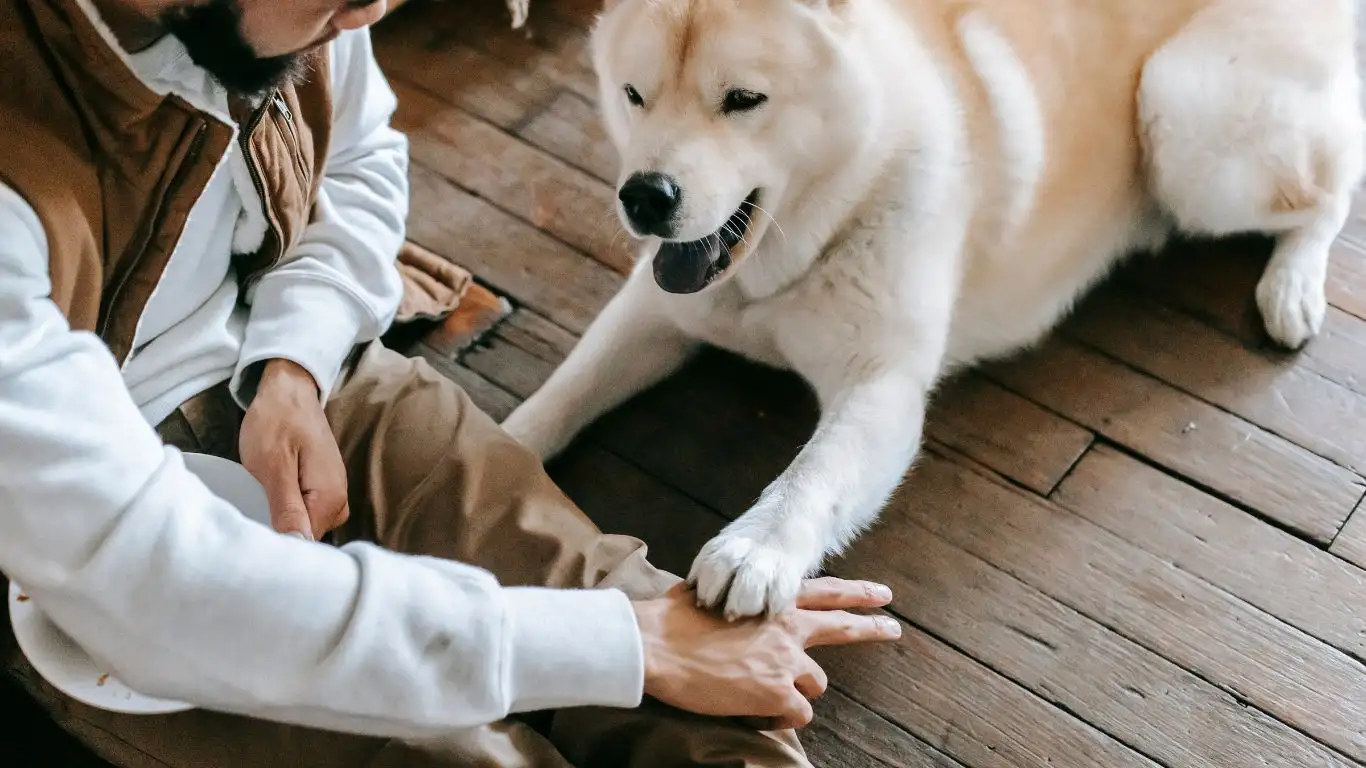
If your dog is chewing on plants due to boredom or excess energy, increasing their daily physical activity can be a game-changer. One of the best ways to curb destructive behavior is to tire them out mentally and physically. As a Canine-Assisted Therapy Trainer, I know that a well-exercised dog is far less likely to engage in undesirable behaviors like chewing on garden plants.
Walks and Playtime
Regular walks and play sessions can significantly reduce the likelihood of destructive chewing. A tired dog is a happy dog, and they’re much less likely to cause chaos in your garden. If your dog loves to run, make sure they get a good amount of exercise to burn off that extra energy. Playtime with you is a great bonding experience and provides them with the stimulation they need. It doesn’t have to be complicated—fetch, tug-of-war, or a simple game of chase in the yard can be more than enough.
Interactive Toys and Puzzle Feeders
If walks aren’t enough to satisfy your dog’s need for mental stimulation, try interactive toys or puzzle feeders. These toys engage your dog’s brain and provide a healthy outlet for their natural chewing instinct. There are a ton of options available, from treat-dispensing toys to puzzle boards that require problem-solving skills. They’re a great way to keep your dog busy and entertained, so they’re less likely to take an interest in your plants.
These types of toys can also be used during training sessions. In fact, many dog owners I’ve worked with have seen a significant reduction in chewing behavior once they introduced these toys into their dog’s routine. It’s a way of giving your dog both physical and mental challenges without relying solely on external rewards.
Building Long-Term Habits: Reinforcing Training Over Time

Now that you’ve tackled the initial issues with your dog chewing on garden plants, it’s time to focus on building long-term habits. While training can yield quick results, maintaining those results requires consistency and continued reinforcement. Just like humans, dogs can slip back into old habits if the right conditions arise, so staying on top of training is key to ensuring your garden stays safe and your dog learns to avoid those tempting plants for good.
Over the years, I’ve worked with many dog owners who were initially frustrated with their dog’s chewing behavior, but through consistent reinforcement, they saw incredible improvements. The key is to integrate training into your dog’s daily routine and make it a regular part of their life. With time and patience, you’ll see that your dog no longer needs constant reminders to leave your plants alone—they’ll just know!
Ongoing Positive Reinforcement
As I mentioned earlier, positive reinforcement is a powerful tool in dog training. But just because your dog has learned not to chew on plants doesn’t mean you should stop rewarding good behavior altogether. In fact, continuing to reward your dog with treats, praise, and affection will reinforce the idea that leaving the plants alone is something they should continue doing. This helps solidify the behavior as a permanent habit rather than just a phase.
Remember, this doesn’t mean you have to continue giving your dog treats every time they follow the “leave it” command. Once they’ve mastered the behavior, you can gradually phase out the treats, offering praise and affection instead. But in those moments when you catch them being extra well-behaved, don’t hesitate to reward them! It’s about maintaining the positive association between good behavior and positive outcomes.
Routine and Supervision
For dogs, routine is everything. Dogs thrive when they know what to expect and when to expect it. So, keeping a consistent schedule for walks, playtime, and training sessions can significantly help in preventing chewing incidents. Consistency builds trust and security in your dog, and it also gives them less time to engage in destructive behaviors. I’ve found that dogs with a predictable routine are far less likely to chew on plants or engage in other unwanted habits.
In addition to routine, supervision is an important aspect of reinforcing good habits. While your dog is still learning, it’s crucial to monitor them, especially in situations where they might have access to plants. This is particularly true for younger dogs or those who have not yet learned the full extent of the boundaries. It’s normal for dogs to test limits, so don’t be discouraged if your dog slips up every now and then. Simply guide them back onto the right path with a gentle reminder and positive reinforcement.
Can You Train Your Dog to Avoid Certain Plants? Yes, You Can!
Another common question I get from dog owners is whether it’s possible to train their dog to avoid specific plants in the garden. The answer is yes, absolutely! Through consistent training, you can teach your dog to avoid certain areas or plants without relying on barriers or deterrents. It may take some time, but with the right approach, your dog can learn which plants are off-limits.
Using Boundaries as Part of Training
One of the most effective ways to train your dog to avoid specific plants is by teaching them to respect boundaries. This can be done with verbal cues, like saying “leave it” when they approach a particular plant or area. If you combine this with positive reinforcement, your dog will start associating the cue with the action of stepping away from the plants. Over time, your dog will learn to stay clear of those plants even when you’re not around to supervise.
Another tip is to take advantage of the natural instincts your dog has. Many dogs are more cautious around certain scents, sounds, or textures, so you can experiment with different tactics like placing a mat or different textures near the plants. Dogs can be sensitive to touch and will often avoid stepping on uncomfortable surfaces. These creative solutions can serve as an additional reminder for your dog to stay away from those specific areas in the garden.
Health and Safety Considerations for Your Dog and Your Plants
While you’re focusing on training your dog to stop chewing on plants, it’s also important to consider the safety of both your dog and your garden. Some plants can be toxic to dogs, and it’s crucial to know which ones are safe and which ones should be avoided. Toxic plants can lead to serious health issues, including vomiting, diarrhea, and even organ failure in severe cases. If you’re unsure about the safety of certain plants, it’s always a good idea to consult a vet or a local gardening expert.
Some common plants that are toxic to dogs include:
- Oleander
- Azaleas
- Tulips
- Foxglove
- Castor bean plant
It’s worth noting that not all plants are toxic, but it’s better to err on the side of caution. If your dog has a tendency to chew on plants, it’s important to remove or replace any harmful plants with safer options. It’s also a good idea to supervise your dog during outdoor playtime, especially if they have a history of chewing on plants.
For more information on dog safety and toxic plants, you can check out resources like PetMD or AKC. Always stay informed about the types of plants in your yard to ensure your dog’s safety.
Disclaimer
The information provided in this article is based on personal experience as a Canine-Assisted Therapy Trainer and general dog training practices. It is not intended to replace professional veterinary advice. If you have concerns about your dog’s behavior or health, it is always best to consult with a veterinarian or professional dog trainer. Additionally, be sure to check the safety of your plants with a trusted source before allowing your dog access to them.
